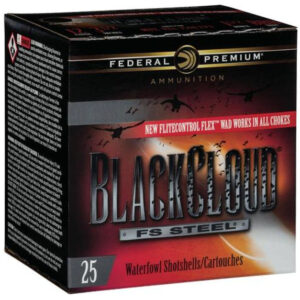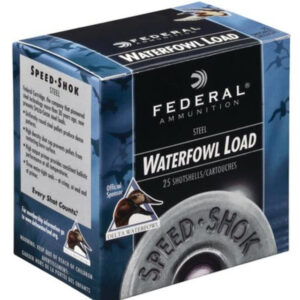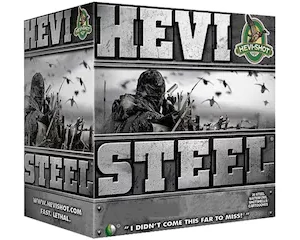Sale!
Bulk 10ga Ammo
Original price was: $48.99.$44.99Current price is: $44.99.
Sale!
Original price was: $53.09.$49.99Current price is: $49.99.
10 Gauge Ammo: A Comprehensive Guide
The 10 gauge cartridge, known for its high power and wide spread, is popular among waterfowl and turkey hunters. Here's an in-depth look at its background, uses and benefits.History of 10 Gauge
The 10 gauge originated in the mid-19th century, primarily used for hunting large waterfowl and turkey.
Characteristics of 10 Gauge Ammo
Ammo Specs
- Caliber: .775 inches (19.7mm)
- Case length: 3.5 inches (89mm) or 3.75 inches (95mm)
- Muzzle velocity: Up to 1,300 ft/s
- Effective range: 30-60 yards
- Recoil: Very strong, suitable for experienced shooters
Uses of 10 Gauge Ammo
- Waterfowl hunting: Ideal for geese, ducks and swans.
- Turkey hunting: Effective for large turkeys.
- Upland game bird hunting: Suitable for pheasant and grouse.
- Competitive shooting: Used in some shooting competitions.
Types of 10 Gauge Ammo
- Lead Shotshell: Ideal for hunting small to medium-sized game.
- Steel Shotshell: Suitable for waterfowl hunting.
- Buckshot: Effective for close-range hunting.
- Slugs: Accurate for long-range hunting.
Benefits of 10 Gauge Ammo
- High power: Effective for large game.
- Wide spread: Suitable for hunting multiple targets.
- Long-range accuracy: Effective for distant shots.
- Specialized use: Ideal for waterfowl and turkey hunting.
Factors to Consider When Buying 10 Gauge Ammo
- Manufacturer: Reputable brands like Winchester, Remington and Federal.
- Quality: Look for brass or nickel-plated casings, non-corrosive primers.
- Quantity: 10-25 rounds or more.
- Storage: Dry, secure containers to maintain quality.
Safety Considerations
1. Proper Storage: Store 10 gauge ammo in dry, secure containers to maintain quality. 2. Handling Precautions:- Always handle ammo with clean, dry hands.
- Avoid touching sensitive areas.
- Wear gloves when handling.
- Follow range rules and regulations.
- Ensure proper backstop and safety zones.
- Be aware of surroundings.






